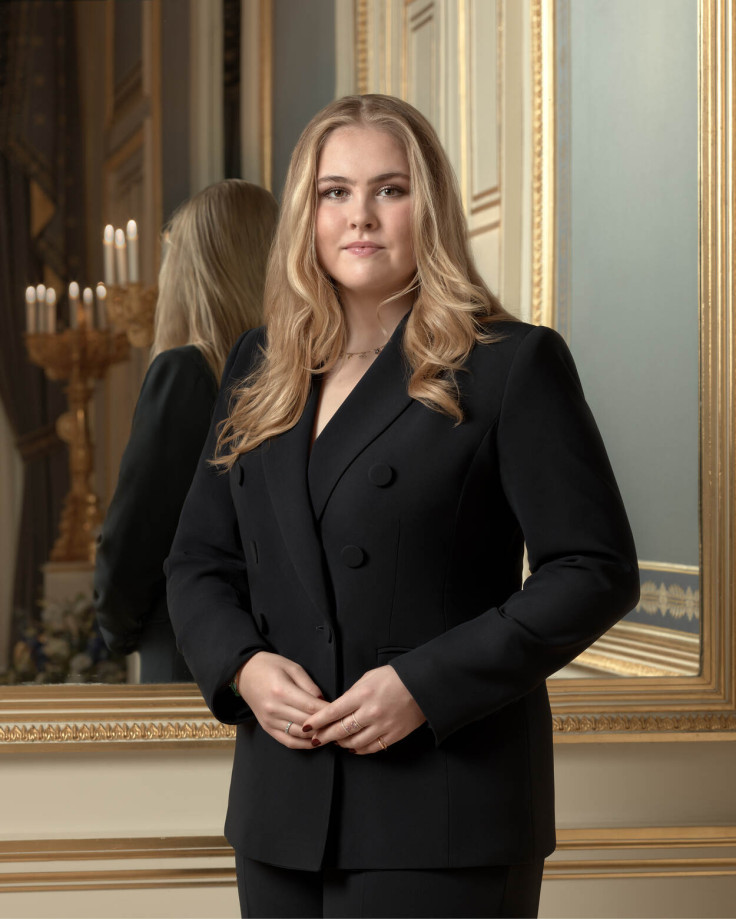A Royal Surprise: Dutch Princess Catharina-Amalia Steals the Show at NATO Summit Dinner
Dutch heir apparent's surprise appearance at historic Hague summit captivates world leaders and social media alike

Two weeks after a serious horseback riding accident left her arm in a sling, Dutch Princess Catharina-Amalia stunned NATO leaders and royal watchers worldwide by appearing at Tuesday's official summit dinner, embodying both personal resilience and diplomatic grace.
The 21-year-old heir to the Dutch throne transformed what could have been a routine state dinner into a viral moment, greeting world leaders at Huis ten Bosch Palace with poise that belied her recent injury. Her unexpected presence at the Netherlands' first-ever NATO heads-of-state summit sent ripples across social media platforms and established her as a rising star in European diplomacy.
Young Royal's Recovery Becomes Symbol of Dutch Resilience
Princess Catharina-Amalia Beatrix Carmen Victoria's journey from hospital bed to diplomatic stage represents more than personal triumph.
Born on 7 December 2003, she became heir apparent when her father King Willem-Alexander ascended the throne on 30 April 2013, positioning her at the forefront of European monarchy's new generation.
Currently pursuing Politics, Psychology, Law and Economics at the University of Amsterdam, the princess has gradually stepped into public life with calculated precision.
Tuesday's appearance marked her most significant diplomatic moment yet, occurring just as NATO leaders concluded landmark agreements on defence spending and Ukraine support.
The timing wasn't coincidental. Palace sources reveal the royal family's annual summer portrait session, traditionally held at Huis ten Bosch in early June, was deliberately postponed to accommodate her recovery—a decision that ultimately created this serendipitous diplomatic moment.
Fashion Diplomacy: When Style Meets Statecraft
The princess's sartorial choice spoke volumes about modern royal messaging. Her deep-green Polo Ralph Lauren cocktail dress, featuring subtle arm tie-details that cleverly concealed any lingering effects from her injury, demonstrated how contemporary royals blend personal narrative with diplomatic protocol.
Paired with statement heels, a chunky gold bracelet, and effortlessly styled waves, her ensemble struck the perfect balance between youthful sophistication and regal authority. The colour choice—echoing the Netherlands' connection to nature and sustainability—wasn't lost on diplomatic observers.
Queen Máxima complemented her daughter's emergence with a striking lime-green Natan jumpsuit, creating a visual harmony that royal fashion experts describe as 'generational continuity meets contemporary edge.'
Social Media Crown: Royal TikTok Moment Goes Global
Within hours of the dinner, clips of Princess Catharina-Amalia greeting world leaders flooded TikTok, Instagram, and royal-watching forums.
The hashtag #DutchPrincessStrong garnered over 2.3 million views, with users praising her grace under pressure and natural diplomatic instincts.
The viral moment comes as European monarchies increasingly rely on younger royals to connect with digital-native audiences, making Catharina-Amalia's natural social media appeal a valuable diplomatic asset.
NATO Summit: Historic Agreements Sealed with Royal Flair
The princess's appearance provided elegant bookending to a summit that delivered substantial policy outcomes. NATO leaders agreed to increase defence spending to 5 percent of GDP while reaffirming unwavering support for Ukraine—decisions that will shape European security for decades.
The two-day summit, culminating on 25 June, also featured a groundbreaking Defence Industry Forum that brought together military, political, and industrial leaders to strengthen collective production capabilities. The Netherlands' successful hosting of this historic gathering enhanced its diplomatic profile significantly.
King Willem-Alexander's closing remarks captured the moment's significance: 'May historians one day view the 2025 NATO Summit as the moment we united for the preservation of peace, freedom and the rule of law.'
Royal Trio: Shaping Monarchy's Future Image
While Princess Catharina-Amalia commanded attention in The Hague, her younger sisters Princess Alexia and Princess Ariane continue their studies abroad, creating what palace insiders call a "royal trio" that's reshaping the Dutch monarchy's public image.
This strategic positioning of the three princesses—each developing distinct public personas while maintaining family unity—reflects modern royal houses' evolution toward more relatable, yet dignified, public engagement.
The careful orchestration of their individual development suggests the Dutch royal family is preparing for a future where traditional ceremony meets contemporary relevance, with Catharina-Amalia leading this transformation.
Looking Forward: Europe's Next Generation of Leadership
Princess Catharina-Amalia's NATO debut signals broader shifts in European leadership dynamics. As established political figures face mounting challenges, younger royals like the Dutch princess offer stability, continuity, and fresh perspectives on traditional diplomatic engagement.
Her academic focus on politics, psychology, law, and economics provides substantive foundation for meaningful contributions to policy discussions—a marked departure from purely ceremonial royal roles of previous generations.
The success of Tuesday's appearance suggests we'll see more strategic deployment of her diplomatic talents as major international summits increasingly value the soft power that contemporary royals can provide.
The Netherlands has found in Princess Catharina-Amalia not just a future queen, but a diplomatic asset whose personal resilience mirrors the nation's broader commitment to international cooperation and democratic values.
© Copyright IBTimes 2025. All rights reserved.






















